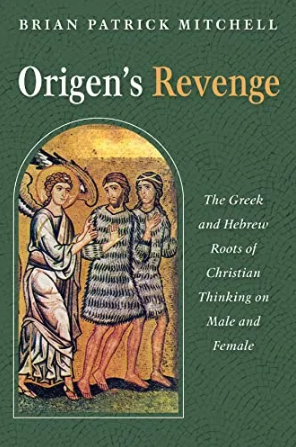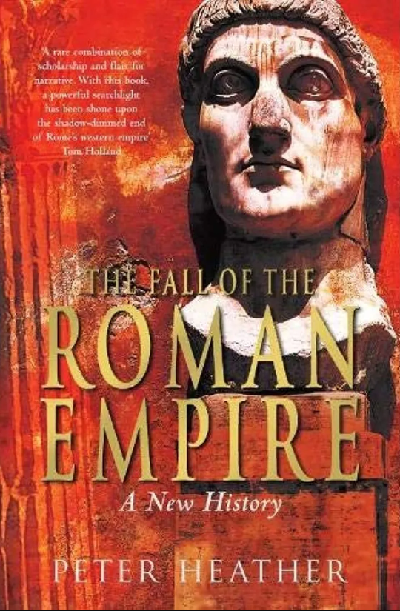World War Two
Published 20 Sept 2023How did the Allies build and manage an enormous railway supplying the Soviet Union through Iran? How did the Red Cross deliver aid parcels through enemy territory to Allied POWs? And, how effective were the rear gunners in ground attack aircraft like the Stuka and Sturmovik? Find out in this episode of Out of the Foxholes.
(more…)
September 21, 2023
Iranian Railways, Red Cross Care Packages, and Tail Gunners – WW2 – OOTF 31
A new paper on the cancellation of the Avro Arrow in 1959
The National Post republished a Canadian Press article about a new research paper by Alan Barnes in the Canadian Military History journal:
In the years after the Second World War, Canada developed its ability to prepare strategic intelligence assessments on defence and foreign policy, the paper notes. It would no longer have to rely entirely on assessments from the United States and Britain.
The analytic capability allowed Canada to fully participate in preparing the assessments on the Soviet threat to North America that would underpin joint Canada-U.S. planning for continental defence, Barnes notes.
“The CF-100 Canuck, a jet interceptor developed and manufactured in Canada, was just entering service, but there were already concerns that it might soon be outclassed by newer Soviet bombers operating at higher altitudes and faster speeds.”
In November 1952, the Royal Canadian Air Force called for an aircraft with a speed of Mach 2 and the ability to fly at 50,000 feet. “These demanding specifications contributed to the escalating costs and frequent delays in the CF-105 program.”
The Soviets would soon display a new long-range jet bomber, the Bison, at the 1954 May Day parade in Moscow. At an airshow the following year, a fly-past of 28 Bison seemed to indicate that the bomber had entered serial production, two years earlier than predicted, the paper says. In fact, only 18 prototype aircraft participated in the airshow, flying past several times to give the impression of larger numbers.
Even so, this display, along with the appearance of a new Soviet long-range turboprop bomber, the Tu-95 (dubbed the Bear), raised fears that the Soviet Union would soon outnumber the United States in intercontinental bombers, sparking a “Bomber Gap” controversy that figured prominently in American politics, the paper says.
[…]
A January 1958 assessment, “The Threat to North America, 1958-1967”, by Canada’s Joint Intelligence Committee, a co-ordinating body, ultimately had the greatest impact on decisions related to the Arrow, the paper says.
The assessment laid out clear judgments concerning the imminent transition from crewed bombers to ballistic missiles and described the limited size and capabilities of the Soviet bomber force, Barnes notes.
It observed that the Soviet ballistic missiles which were on the verge of being developed were likely to be markedly superior to the foreseeable defences, and concluded that missiles would progressively replace aircraft as the main threat to North America.
The assessment said this meant there would be little justification for the Soviet Union to increase the number of bombers, or to introduce new ones, after 1960.
“The (Joint Intelligence Committee)’s January 1958 assessment was correct in foreseeing Moscow’s shift from bombers to missiles over the subsequent decade,” Barnes writes.
He points out that following the Sputnik launch, Soviet leader Nikita Khrushchev came to see missiles as a panacea for a range of defence problems and as a cheaper alternative to conventional weapons. “With the Soviet bomber force now looking irrelevant and obsolete, it was relegated to a secondary position in Soviet military thinking.”
This is York
Jago Hazzard
Published 28 May 2023“Make all the railways come to York!”
(more…)
QotD: The Iliad as Bronze Age gangsta rap
A few months ago I tried moving the Iliad from the list of books I’m good at pretending to have read to the list of books I’ve actually read, and to my surprise I bounced off of it pretty hard. What I wasn’t expecting was how much of it is just endlessly tallied lists of gruesome slayings, disses, shoutouts to supporters, more killings, women taken by force, boasts about wealth, boasts about blinged-out-equipment, more shoutouts to the homies from Achaea who here repreSENTing, etc. The Iliad is basically one giant gangster rap track, and gangster rap is kinda boring.
What was cool though is I felt like I came away with a much better understanding of Socrates, Plato, and that whole milieu. Much like it’s easy to miss the radicalism of Christianity when you come from a culture steeped in it, it’s easy to miss the radicalism of Socrates if you don’t understand that this is the culture he was reacting against. Granted, the compilation of the Homeric epics took place centuries before the time of classical Athens, but my sense is that in important respects things hadn’t changed all that much. In our society, even people who aren’t professing Christians have been subliminally shaped by a vast set of Christian-inflected moral and epistemic and metaphysical assumptions. Well in the same way, in the Athens of Socrates and of the Academy, the “cultural dark matter” was the world of the Iliad: honor, glory, blinged out bronze armor, tearing hot teenagers from the arms of their lamenting parents, etc.
We have a tendency to think of the Greek philosophers as emblematic of their civilization, when in reality they were one of the most bizarre and unrepresentative things that happened in that society. But Numa Denis Fustel de Coulanges is here to tell us it wasn’t just the philosophers! So much of our mental picture of Ancient Greece and Rome is actually a snapshot of one fleeting moment in the histories of those places, arguably a very unrepresentative moment at which everything was in the process of collapsing. It’s like if [POP CULTURE ANALOGY I’M TOO TIRED TO THINK OF]. And actually once you think about it this way, everything makes way more sense. All those weird customs the Greeks and Romans had, all the lares and penates and herms and stuff, those are what these societies were about for hundreds and hundreds of years, and the popular image is just this weird encrustation, this final flowering at the end.
Jane and John Psmith, “JOINT REVIEW: The Ancient City, by Numa Denis Fustel de Coulanges”, Mr. and Mrs. Psmith’s Bookshelf, 2023-02-20.
September 20, 2023
Christian views on men and women
The most recent book review from Mr. and Mrs. Psmith discusses Brian Patrick Mitchell’s Origen’s Revenge: The Greek and Hebrew Roots of Christian Thinking on Male and Female:
The following is an email exchange between the Psmiths, edited slightly for clarity.
John: You know dear, we’ve been writing this book review Substack for eight months now, ever since that crazy New Year’s resolution of ours, but we still haven’t done “the gender one”. And I feel like we have a real competitive advantage at this, since both sides of the unbridgeable epistemic chasm between the sexes are represented here. So let’s settle some of the eternal questions: Can men and women be friends? Who got the worse deal out of the curse in the Garden of Eden? And what’s up with your abysmal grip strength anyway?
I was perplexed by these and other questions, but then I picked up this book on the theology of gender, and it all got a lot clearer. The author is Deacon Brian Patrick Mitchell, an Eastern Orthodox clergyman and retired military officer. In a previous life, Mitchell testified before the Presidential Commission on the Assignment of Women in the Armed Forces and then followed that up with a book called Women in the Military: Flirting with Disaster, so he’s been interested in the differences between men and women for a while.
People have been observing for centuries that Christianity can be a little bit schizophrenic on the subject of gender relations. From the earliest days of the Apostolic era, there are two strains in evidence within Christianity: one which shores up the gender divisions common to most agricultural societies, and another which radically transcends them. Oftentimes both strains are visible within a single person! Thus you have the Apostle Paul on the one hand saying in his letter to the Ephesians:
Wives, submit yourselves unto your own husbands, as unto the Lord. For the husband is the head of the wife, even as Christ is the head of the church: and he is the saviour of the body. Therefore as the church is subject unto Christ, so let the wives be to their own husbands in every thing. (Ephesians 5:22-24)
But then in Galatians:
There is neither Jew nor Greek, there is neither bond nor free, there is neither male nor female: for ye are all one in Christ Jesus. (Galatians 3:28)
For as long as Christianity has existed, there have been people emphasizing one of these tendencies as the “true” Christian message on gender while attempting to minimize the other. Sometimes these arguments are interesting and sometimes they bring out something important (I’m a fan of Sarah Ruden’s Paul Among the People on the one side, and of Toby Sumpter’s fiery homilies on the other), but I think in both cases they’re falling into the error of trying to simplify something that is actually complicated. There’s a certain kind of person who can’t handle inconsistency, and that kind of person is going to have trouble with Christianity, because to a finite being the products of an infinite mind will sometimes appear inconsistent. Does Christianity want women to be subject to men, or does it want men and women to transcend their natures? The answer is very clearly both.
Mitchell’s book is compelling because it doesn’t try to minimize or hide one of these tendencies, but acknowledges up front that they’re both there and both have to be struggled with. It then advances the novel (as far as I know) argument that these two tendencies with regard to gender relations actually reflect the two major ethnic and cultural influences on the early Church: Hebrew and Greek.
The ancient Hebrew attitudes towards male and female are apparent from the beginning of the Bible: God creates Eve from out of Adam’s rib, and she is called Woman because she was taken out from Man. Thus the woman is subordinated to the man, yet fundamentally made of the same stuff as him. God calls the division of humanity into men and women good, He blesses families and helps barren women conceive, He commands His people to be fruitful and to multiply, and He promises Abraham that his seed shall be numbered as the stars of heaven. The entire Old Testament is a story of families, sometimes dysfunctional families, but families nonetheless, as opposed to lone men roaming the earth as in the Iliad or Bronze Age Mindset. Male headship is assumed, but it’s also assumed that men are fundamentally incomplete without something that only women can give them: a home, a future, and the thing that makes both, children.
So in Mitchell’s telling, the Hebrew legacy is responsible for the more “trad” side of early Christianity. What about the Greeks? Well we already discussed in our joint review of Fustel de Coulanges’ The Ancient City how ancient Greek society was basically the world of gangster rap: honor, boasting, violence, women as trophies, women as a way of keeping score, women torn wailing from the arms of their parents or husbands and forced into marriage or concubinage or outright slavery. You will be shocked to learn that this culture did not hold a high opinion of women, procreation, or the marital union. Greek philosophy is a massively complicated and diverse beast, but there’s a strong tendency within it to associate women with physicality, nature, and brute matter, and to disdain all of these things in favor of rationality, spirit, and the intellect (all coded as male).
Our readers are probably thinking, “Hang on a minute, I thought the Hebrews were the patriarchal ones, do you mean to say that the hyper-masculine and hyper-misogynistic culture was the one that decided maleness and femaleness didn’t matter?” Well yes I do, and it’s pretty easy to see why if one hasn’t been totally brainwashed by modernity, but maybe it’ll be more convincing if a woman explains it to them.
Jane: Well, I think you gave a pretty accurate description of actually-existing ancient Greek culture, but we have to remember that the Church Fathers weren’t classicists poring through the corpus trying to accurately characterize the past. Rather, they were men of late antiquity, mostly educated in a “Great Books” canon heavy on the classical philosophy — and the worldview of philosophers is often quite different from the general norms and presuppositions of their society as a whole. (Not that modern — by which I mean post-1600 — classicists have always recognized this; E.R. Dodds’s The Greeks and the Irrational is considered a seminal work of classical scholarship precisely because it undercuts a long tradition of taking the philosophers as representative of their culture rather than in conflict with it.)1 So the direct influence on early Christians wasn’t the world Fustel de Coulanges describes (which covers roughly the Greek Dark Ages through the Archaic period), but the texts of the period that came after, as interpreted by an even later era. It’s a bit like looking at our contemporary small-l liberals, who draw heavily on a tradition that rose out of Enlightenment philosophy, which in turn was an outgrowth of and/or reaction to the medieval and early modern worlds: they’re not not connected to all that, but Boethius is not going to be the most helpful context for reading Rorty. You should probably look at Locke instead.
1. Bonus, and shorter, Dodds: “On Misunderstanding the Oedipus Rex“, which you probably do too.
How the feds could lower grocery prices without browbeating CEOs
Jesse Kline has some advice for Prime Minister Jagmeet Singh Justin Trudeau on things his government could easily do to lower retail prices Canadians face on their trips to the grocery store:

CBC report on federal scapegoating of grocery chain CEOs.
https://www.cbc.ca/news/politics/government-grocery-store-meeting-ottawa-food-prices-1.6967978
What exactly the grocery executives are supposed to do to bring down prices that are largely out of their control is anyone’s guess. Do they decrease their profit margins even further, thereby driving independent retailers out of business and shedding jobs by increasing their reliance on automation? Do they stop selling high-priced name-brand products, thus decreasing their average prices while driving up profits through the sale of house-brand products?
If the government were serious about working with grocers, rather than casting them as villains in a piece of performative policy theatre, here are a number of policies the supermarket CEOs should propose that would have a meaningful effect on food prices throughout the country.
End supply management
Why do Canadians pay an average of $2.81 for a litre of milk — among the highest in the world — when our neighbours to the south can fill their cereal bowls for half the cost? Because a government-mandated cartel controls the production of dairy products in this country, while the state limits foreign competition through exorbitantly high tariffs on imports.The same, of course, is true of our egg and poultry industries. Altogether, it’s estimated that supply managements adds between $426 and $697 a year to the average Canadian household’s grocery bill. It’s not a direct cause of inflation, but it’s a policy that, if done away with, could save Canadians up to $700 a year in fairly short order.
Yet not only have politicians been unwilling to address it, they have been fighting some of our closest trading partners to ensure that foreign food products don’t enter the Canadian market and drive down prices. Ditching supply management would be a no-brainer, if anyone in Ottawa was willing to use their brain.
Reduce regulations
The best way to decrease prices in any market is to foster competition. As the Competition Bureau noted in a report released in June, “Canada’s grocery industry is concentrated” and “tough to break into”. Worse still, “In recent years, industry concentration has increased”.So why don’t more foreign discount grocery chains set up shop here? Perhaps it’s because they know our national policy encourages Canadian-owned oligopolies. While grocery retailers don’t face the same foreign-ownership restrictions as airlines or telecoms, the products they sell are heavily regulated, which acts as a barrier to bringing in cheaper goods from other countries.
Although it wasn’t the primary reason for the lack of foreign competition, the Competition Bureau did note that, “Laws requiring bilingual labels on packaged foods can be a difficult additional cost for international grocers to take on”.
Other ways the federal government could help Canadians afford their grocery bills include:
- Jail thieves
- Stop port strikes
- Don’t tax beer
- Axe the carbon tax
Don’t hold your breath for any of these ideas to be taken up by Trudeau’s Liberals.
Wire Guided Tank Killer | Swingfire | Anti-Tank Chats
The Tank Museum
Published 2 Jun 2023In this video, Chris Copson looks at the Swingfire, a Cold War period anti-tank guided weapons system. This powerful and hard-hitting missile was mounted on vehicles including Striker, Ferret, and FV 432. With a range of up to 4km, it had the significant advantage that it would outrange tank guns and could be fired remotely by the controller, enabling the launch vehicle to remain in cover.
(more…)
QotD: The structure of an American university
We need to start by outlining the structure of the university and all of its employees. Universities are very big. Even many small liberal arts colleges will have several hundred (if not many hundreds) of employees and large state universities have thousands; UNC-Chapel Hill has 19,743 undergraduates and 12,961 total staff members, for instance. I should note that while there are many small liberal arts colleges (SLACs) in the USA, the enormous size of large, public R1s1 means that collectively they make up more than half of the US university system by both faculty and students, so this is a case in which the big schools have become typical because they are so big to swamp everything else. That said, smaller institutions matter and what I am going to say here should apply broadly; I will note where conditions differ for different kinds of institutions.
So let’s start dividing all of those employees down so we know what we’re dealing with. We can start by splitting the university into faculty and staff (with student-workers as a third group we’ll not discuss this week); faculty teach and do research whereas staff are all of the supporting administrators and workers that make the university function. We’re not going to talk much about staff, but briefly we can divide them quickly into four big groups: leadership (chancellors, deans, and assistant deans of various kinds; of old these used to be professors pulled into leadership temporarily but these days these are professional managers),2 department staff (who work within academic departments handling the scheduling, paperwork and other essential support services), university staff (who staff the university-wide bureaucracies like the registrar or bursar) and finally what I’ll call – somewhat imprecisely – facilities staff (a wide category covering all of the folks who do a lot of the physical work that keeps a university running; repair, grounds-keeping, janitorial tasks, running dining areas, etc. etc.). All of these people are important, but this week’s post isn’t about them; I break them up here so that when I do mention them, you understand who I mean.
Faculty are divided as well into two large groups: tenure track and non-tenure track. Tenure-track jobs are what most people are familiar with, at least in a vague way. The tenure track was supposed to be (and pre-aughts, was) the “standard” career path for an academic at a university. That’s the system everyone knows, if they know a system. But another system was made.3 And that brings us to non-tenure track positions, both permanent and temporary, full-time and (fake) part-time (which are often actually full time), which will consume most of this post. We’re going to break these up primarily between full-time non-tenured or teaching track positions and notionally “part time” or adjunct appointments, but there are a few other types thrown in there. Crucially, this other system makes up the majority of university teachers, around 67% and rising.
Bret Devereaux, “Collections: Academic Ranks Explained Or What On Earth Is an Adjunct?”, A Collection of Unmitigated Pedantry, 2023-04-28.
1. R1 is a term from the Carnegie Classification of Institutions of Higher Education, which classifies colleges and universities by the degrees they grant and how research oriented they are. An “R1” classification indicates the highest level of research focus; nearly all of the large flagship state schools are R1 institutions.
2. Whose stewardship of their universities is somehow almost uniformly worse than what was accomplished by amateur professors who’d rather not have been asked.
3. Please read with the voice of Cate Blanchett intoning, “but another ring was made”.
September 19, 2023
The end of the Western Roman Empire
Theophilus Chilton updates a review from several years ago with a few minor changes:
British archaeologist and historian Bryan Ward-Perkin’s excellent 2005 work The Fall of Rome and the End of Civilization is a text that is designed to be a corrective for the type of bad academic trends that seem to entrench themselves in even the most innocuous of subjects. In this case, Ward-Perkins, along with fellow Oxfordian Peter Heather in his book The Fall of the Roman Empire: A New History of Rome and the Barbarians, sets out to fix a glaring error which has come to dominate much of the scholarly study of the 4th and 5th centuries in the western Empire for the past few decades.
This error is the view that the western Empire did not actually “fall”. Instead, so say many latter-day historical revisionists, what happened between the Gothic victory at Adrianople in 378 AD and the abdication of Romulus Augustulus, the last western Emperor, in 476 was more of an accident, an unintended consequence of a few boisterous but well-meaning neighbors getting a bit out of hand. Challenged is the very notion that the Germanic tribes (who cannot be termed “barbarians” any longer) actually “invaded”. Certainly, these immigrants did not cause harm to the western Empire — for the western empire wasn’t actually “destroyed”, but merely “transitioned” seamlessly into the era we term the Middle Ages. Ward-Perkins cites one American scholar who goes so far as to term the resettlement of Germans onto land that formerly belonged to Italians, Hispanians, Britons, and Gallo-Romans as taking place “in a natural, organic, and generally eirenic manner”. Certainly, it is gauche among many modern academics in this field to maintain that violent barbarian invasions forcibly ended high civilization and reduced the living standards in these regions to those found a thousand years before during the Iron Age.
Ward-Perkins points out the “whys” of this historical revision. Much of it simply has to do with political correctness (which he names as such) — the notion that we cannot really say that one culture is “higher” or “better” than others. Hence, when the one replaces the other, we cannot speculate as to how this replacement made things worse for all involved. In a similar vein, many continental scholars appear to be uncomfortable with the implications that the story of mass barbarian migrations and subsequent destruction and decivilization has in the ongoing discussion about the European Union’s own immigration policy — a discussion in which many of these same academics fall on the left side of the aisle.
Yet, all of this revisionism is bosh and bunkum, as Ward-Perkins so thoroughly points out. He does this by bringing to the table a perspective that many other academics in this field of study don’t have — that of a field archaeologist who is used to digging in the dirt, finding artifacts, drawing logical conclusions from the empirical evidence, and then using that evidence to decide “what really happened”, rather than just literary sources and speculative theories. Indeed, as the author shows, across the period of the Germanic invasions, the standard of living all across Roman western Europe declined, in many cases quite precipitously, from what it had been in the 3rd century. The quality and number of manufactured goods declined. Evidence for the large-scale integrative trade network that bound the western Empire together and with the rest of the Roman world disappears. In its place we find that trade goods travelled much smaller distances to their buyers — evidence for the breakdown of the commercial world of the West. Indeed, the economic activity of the West disappeared to the point that the volume of trade in western Europe would not be matched again until the 17th century. Evidence for the decline of food production suggests that populations fell all across the region. Ward-Perkins’ discussion of the decline in the size of cattle is enlightening evidence that the degeneration of the region was not merely economic. Economic prosperity, the access of the common citizen to a high standard of living with a wide range of creature comforts, disappeared during this period.
The author, however, is not negligent in pointing out the literary and documentary evidence for the horrors of the barbarian invasions that so many contemporary scholars seem to ignore. Indeed, the picture painted by the sum total of these evidences is one of harrowing destruction caused by aggressive, ruthless invaders seeking to help themselves to more than just a piece of the Roman pie. Despite the recent scholarly reconsiderations, the Germans, instead of settling on the land given to them by various Emperors and becoming good Romans, ended up taking more and more until there was nothing left to take. As Ward-Perkins puts it,
Some of the recent literature on the Germanic settlements reads like an account of a tea party at the Roman vicarage. A shy newcomer to the village, who is a useful prospect for the cricket team, is invited in. There is a brief moment of awkwardness, while the host finds an empty chair and pours a fresh cup of tea; but the conversation, and village life, soon flow on. The accommodation that was reached between invaders and invaded in the fifth- and sixth- century West was very much more difficult, and more interesting, than this. The new arrival had not been invited, and he brought with him a large family; they ignored the bread and butter, and headed straight for the cake stand. Invader and invaded did eventually settle down together, and did adjust to each other’s ways — but the process of mutual accommodation was painful for the natives, was to take a very long time, and, as we shall see …left the vicarage in very poor shape. (pp. 82-83)
Professor Bret Devereaux discussed the long fifth century on his blog last year:
… it is not the case that the Roman Empire in the west was swept over by some destructive military tide. Instead the process here is one in which the parts of the western Roman Empire steadily fragment apart as central control weakens: the empire isn’t destroy[ed] from outside, but comes apart from within. While many of the key actors in that are the “barbarian” foederati generals and kings, many are Romans and indeed […] there were Romans on both sides of those fissures. Guy Halsall, in Barbarian Migrations and the Roman West (2007) makes this point, that the western Empire is taken apart by actors within the empire, who are largely committed to the empire, acting to enhance their own position within a system the end of which they could not imagine.
It is perhaps too much to suggest the Roman Empire merely drifted apart peacefully – there was quite a bit of violence here and actors in the old Roman “center” clearly recognized that something was coming apart and made violent efforts to put it back together (as Halsall notes, “The West did not drift hopelessly towards its inevitable fate. It went down kicking, gouging and screaming”) – but it tore apart from the inside rather than being violently overrun from the outside by wholly alien forces.
For some reason, ordinary Londoners don’t seem to appreciate Mayor Khan’s ULEZ initiatives
It’s hard to believe that anyone could possibly want to avoid London Mayor Sadiq Khan’s Ultra Low Emission Zone (ULEZ) expansion beyond the initial areas of the city, but a quick search of Twit-, er, I mean “X” shows evidence of what Justin Trudeau might characterize as a “small fringe minority … holding unacceptable views”:
Weird, isn’t it. All those “decommissioned” cameras. And people physically blocking access to workers:
London has put up with a lot over the centuries, but Mayor Khan’s ULEZ somehow seems to have awakened the resistance in a major way:
Brian Peckford republished this article from Yudi Sherman on the pushback against London’s ULEZ expansion:
London taxpayers are damaging the city’s surveillance vans in an escalating feud between Mayor Sadiq Khan and the city’s residents.
Last month Khan peppered the city with ultra-low emission zones (ULEZs), areas in London accessible only to low-emission vehicles. Cars that do not meet the city’s environmental standards are charged £12.50 ($16) for entering the ULEZ. Automatic Number Plate Recognition (ANPR) cameras positioned around the zones read license plates and check them against the vehicles’ make and model in real time. If a vehicle does not meet the environmental threshold, the fine is levied against the car owner. Failure to pay can lead to fines as high as £258 ($331).
The ULEZ climate mandate has drawn heavy protests from residents, including hunger strikes and refusal to pay fines. Taxpayers have also taken to disabling the ANPR surveillance cameras which Transport for London (TfL), the city’s transportation department, said will be used both for climate and law enforcement.
In response, the city deployed mobile surveillance vans mounted with ANPR cameras across London in the hopes of evading attacks, but the vans are being targeted as well. Some have been spotted covered in graffiti with their tires slashed, while others have been completely covered in tarp, reports the Daily Mail.
The activists are said to belong to a group calling itself the Blade Runners and have promised not to rest until every ULEZ camera is removed or destroyed “no matter what”. The group is being widely cheered by its compatriots, including media personality and political commentator Katie Hopkins. Over 4,000 people have joined a Facebook group to report ULEZ van sightings.
Between April 1st and August 31st, police recorded 351 incidents of destruction to ULEZ cameras and 159 removals, reports Sky News, an average of over 100 a month. Of those incidents, 171 reportedly occurred since August 17th alone, just before the ULEZ mandate officially expanded to include all outer London boroughs. Two individuals have been arrested in connection with the incidents, one of whom was charged.
One reported Blade Runner said, “In terms of damage it’s way more than what [London Mayor Saidq Khan and TfL] have stated.”
Jeremy Clarkson’s The Greatest Raid of All
North One
Published 4 May 2020Due to copyright restrictions, some music and scenes have been altered or removed in this upload. You can find the original unaltered documentary here: The Story Of The …
Jeremy Clarkson tells the story of the audacious commando raid on the German occupied dry dock at St Nazaire in France on March 28th 1942. Made for the BBC in 2007 by North One.
(more…)
QotD: Logical consistency isn’t their jam
The same people who last week were screeching about the government having concentration camps now want me to give my AR15s to that same government.
The same people who last month were hyperventilating about the government slaughtering black people now expect me to surrender my guns to that same government.
The same people who last year were setting stuff on fire and yipping about the government rounding up the gays and Muslims for liquidation now think it’s a good idea for me to just hand over my rifles to that same government.
You chuckleheads need to make up your damned minds.
Lawdog, “You know what I find …”, The Lawdog Files, 2019-08-07.
September 18, 2023
Learning lessons from the plight of the British army in 1940
Lessons from history are only occasionally learned easily … they’re more likely brought to our attention by the Gods of the Copybook Headings after we’ve suffered some awful setback. As the latin tag would have it, Si vis pacem, para bellum: if you want peace, be prepared for war. Most western democracies refuse to believe this is true, and one of the easiest things for peacetime democratic governments to do is to short-fund the military and use the “savings” for more politically popular things that will help them get re-elected. The Canadian government has been a shining example of this since the late 1960s, with no end in sight.
A recent book on the British army, tracing its decline from the end of the First World War to the defeat in the Battle of France in 1940 shows just how quickly a world-beating army can be reduced to second-best in its next conflict. Richard Dannatt & Robert Lyman, the authors of Victory: the British Army 1918-1940 to Defeat, had an article in the Sunday Mail, illustrating the parallels between the army in their book and the British army today:
WHEN IT comes to national defence, never take your eye off the ball. That is a lesson we can and must learn from history. Because the disturbing fact is that this country did just that in the 1920s and 1930s in the aftermath of the First World War and the result very nearly cost us our freedom as Hitler’s forces threatened our shores.
Britain won the war in 1918 but then shamefully lost the peace as our army was allowed to atrophy.
It is often forgotten how professional the British Army had become by 1918, to pull off a stunning battlefield victory over the Germans in northern France in the final Hundred Days of the war.
It had been a long time coming after years of static trench warfare and no decisive breakthrough, just massive loss of life in the blood baths at Ypres, Verdun, the Somme and Passchendaele.
But finally, at the Battle of Amiens, British commanders — often wrongly caricatured as dunderheads and “donkeys” leading lions – demonstrated that they were able to understand and master the intricacies of the modern battlefield. With their sophisticated co-ordination of all elements of combat power — infantry, artillery, air power, armour — the stalemate was broken.
Modern war-fighting skills, technology and methods — learned at great cost in lives over the previous three-and-a-half years — secured victory for the British Army and its allies in 1918 as the Germans admitted defeat and sued for peace.
And yet little more than 20 years later, the boot was on the other foot as the next generation of German soldiers poured into France and defeated the Allies in a lightning campaign that ended with British troops fleeing from the beaches of Dunkirk.
How had victory in 1918 turned so quickly to defeat and humiliation in 1940?
The answer is that it had become the deliberate policy of successive British governments to downgrade the Army — a lesson we must learn today, with a new Defence Secretary who knows little about the brief.
Spending on defence was dramatically slashed amid an ill-thought-through assumption that there would not be another major war within ten years and so.
So far as the then government was concerned, the “war to end all wars” (as the Great War was dubbed) had done its job. There was no need to consider or plan for a future one, whether in policy, financial or practical terms. Everything was an issue of money as budgets were decided by Treasury civil servants with no military advice.
The principal reason why the Army was so unprepared for war in 1939 was that the British government, through faulty defence planning and financing in the previous two decades, made it so.
It turns out that buying up the rights to old rock songs wasn’t a good investment after all
Ted Gioia enjoys a little bit of schadenfreude here because he was highly skeptical of the investments in the first place, although the geriatric rockers who “sold out” seem to have generally made out like bandits this time around:
Back in 2021, investors spent more than $5 billion buying the rights to old songs. Never before in history had musicians over the age of 75 received such big paydays.
I watched in amazement as artists who would never sell out actually sold out. And they made this the sale of a lifetime, like a WalMart in El Paso on Black Friday.
Bob Dylan sold out his entire song catalog ($400 million — ka-ching!). Paul Simon sold out ($250 million). Neil Young sold out ($150 million). Stevie Nicks sold out ($100 million). Dozens of others sold out.
As a result, rock songs have now entered their Madison Avenue stage of life.
Twisted Sister once sang “We’re Not Gonna Take It”. But even they took it — a very large payout, to be specific. A few months ago, the song showed up in a commercial for Discover Card.
Bob Dylan’s song “Shelter from the Storm” got turned into a theme for Airbnb. Neil Young’s “Old Man” was rejuvenated as a marketing jingle for the NFL (touting old man quarterback Tom Brady).
Fans mocked this move. Even Neil Young, now officially a grumpy old man himself, expressed irritation at the move. After all, the head of the Hipgnosis, the leading song investment fund, had promised that the rock star’s “Heart of Gold” would never get turned into “Burger of Gold”.
That hasn’t happened (yet). But where do you draw the line?
I was skeptical of these song buyouts from the start — but not just as a curmudgeonly purist. My view was much simpler. I didn’t think old songs were a good investment. […] But even I didn’t anticipate how badly these deals would turn out.
The more songs Hipgnosis bought, the more its share price dropped. The stock is currently down almost 40% from where it was at the start of 2021.
Things have gotten so bad, that the company is now selling songs.
On Thursday, Hipgnosis announced a plan to sell almost a half billion dollars of its song portfolio. They need to do this to pay down debt. That’s an ominous sign, because the songs Hipgnosis bought were supposed to generate lots of cash. Why can’t they handle their debt load with that cash flow?
But there was even worse news. Hipgnosis admitted that they sold these songs at 17.5% below their estimated “fair market value”. This added to the already widespread suspicion that current claims of song value are inflated.












